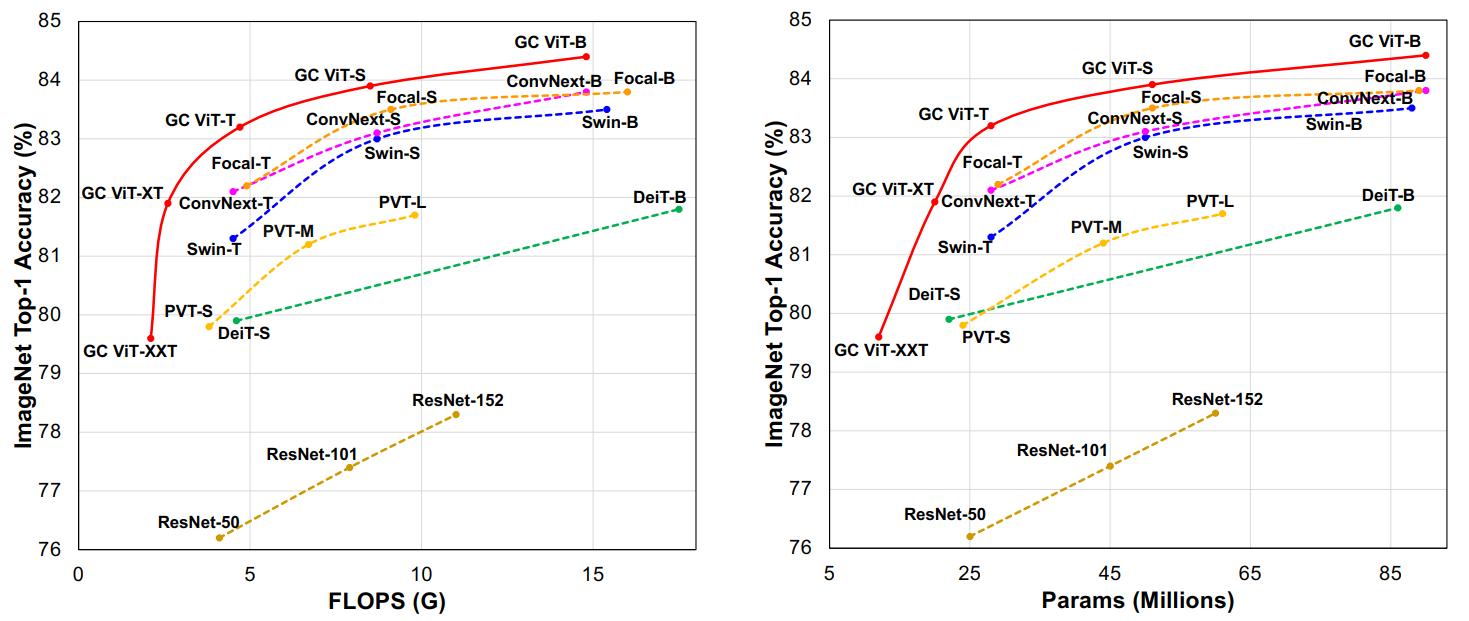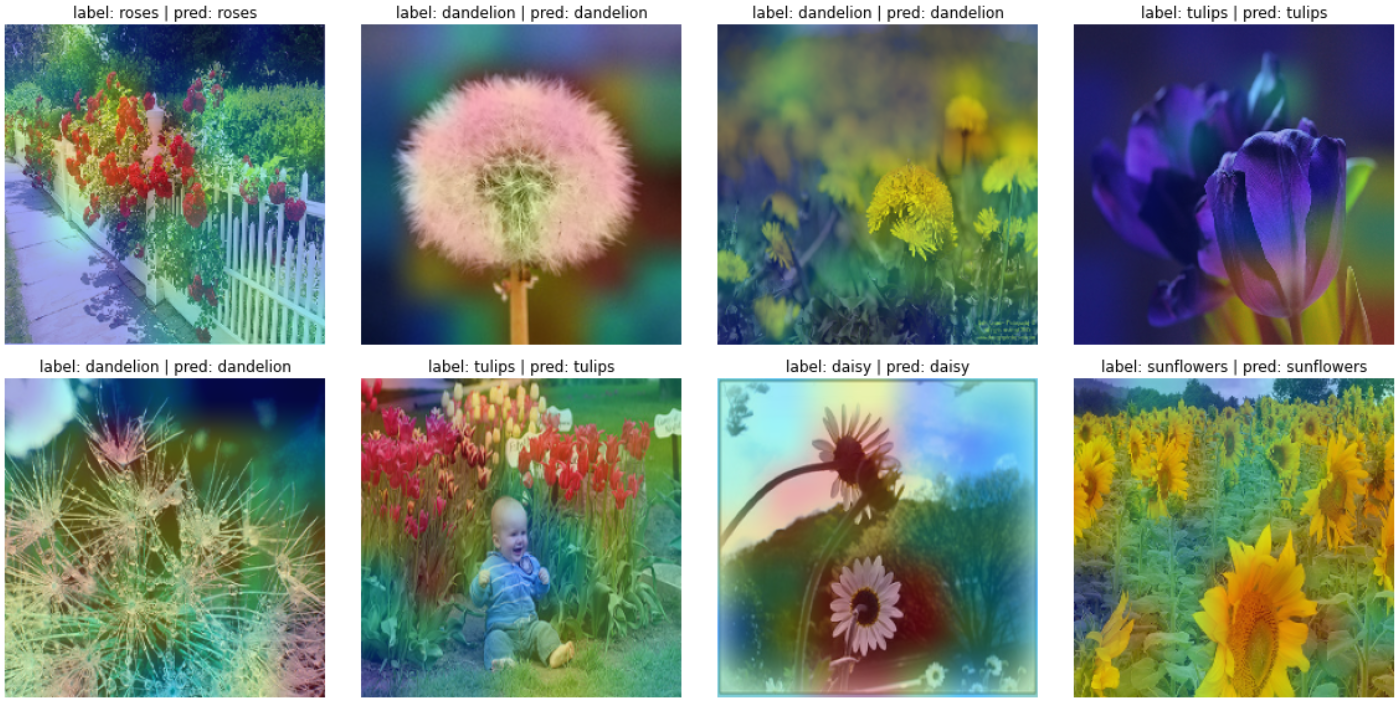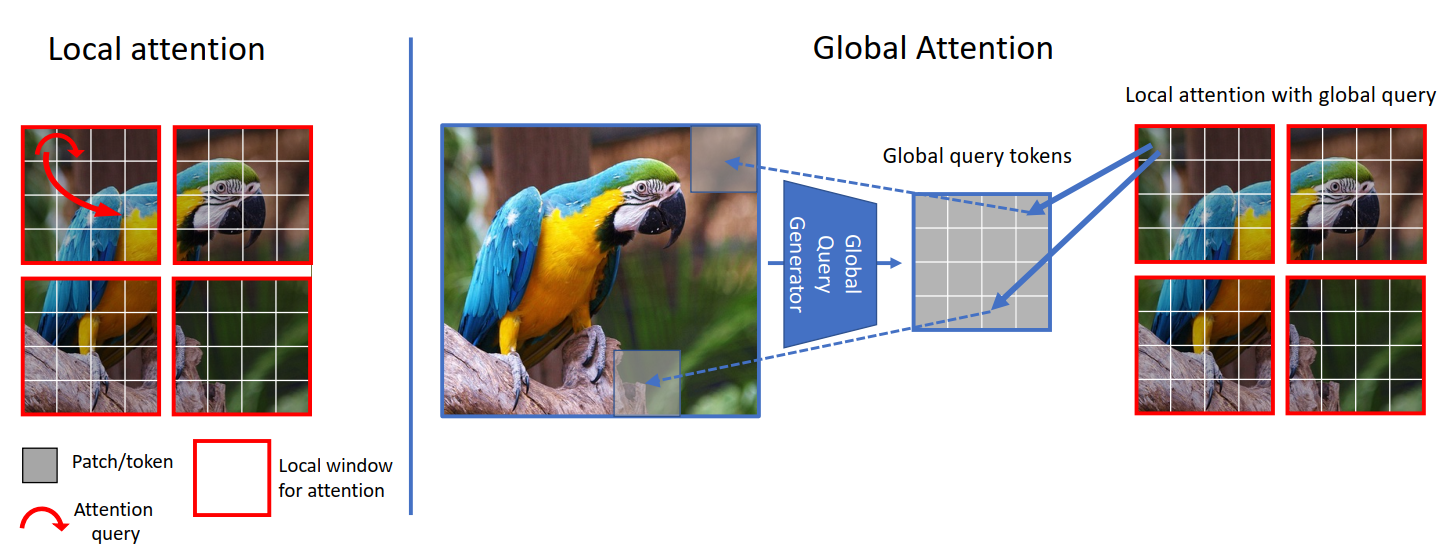GCViT: Global Context Vision Transformer



Tensorflow 2.0 Implementation of GCViT
This library implements GCViT using Tensorflow 2.0 specifically in tf.keras.Model manner to get PyTorch flavor.
Update
Paper Implementation & Explanation **
I have explained the GCViT paper in a Kaggle notebook GCViT: Global Context Vision Transformer, which also includes a detailed implementation of the model from scratch. The notebook provides a comprehensive explanation of each part of the model, with intuition.
Do check it out, especially if you are interested in learning more about GCViT or implementing it yourself. Note that this notebook has won the Kaggle ML Research Award 2022.
Model

- Local Vs Global Attention:

Result

Official codebase had some issue which has been fixed recently (12 August 2022). Here's the result of ported weights on ImageNetV2-Test data,
| Model | Acc@1 | Acc@5 | #Params |
|---|
| GCViT-XXTiny | 0.663 | 0.873 | 12M |
| GCViT-XTiny | 0.685 | 0.885 | 20M |
| GCViT-Tiny | 0.708 | 0.899 | 28M |
| GCViT-Small | 0.720 | 0.901 | 51M |
| GCViT-Base | 0.731 | 0.907 | 90M |
| GCViT-Large | 0.734 | 0.913 | 202M |
Installation
pip install -U gcvit
Usage
Load model using following codes,
from gcvit import GCViTTiny
model = GCViTTiny(pretrain=True)
Any input size other than 224x224,
from gcvit import GCViTTiny
model = GCViTTiny(input_shape=(512,512,3), pretrain=True, resize_query=True)
Simple code to check model's prediction,
from skimage.data import chelsea
img = tf.keras.applications.imagenet_utils.preprocess_input(chelsea(), mode='torch')
img = tf.image.resize(img, (224, 224))[None,]
pred = model(img).numpy()
print(tf.keras.applications.imagenet_utils.decode_predictions(pred)[0])
Prediction:
[('n02124075', 'Egyptian_cat', 0.9194835),
('n02123045', 'tabby', 0.009686623),
('n02123159', 'tiger_cat', 0.0061576385),
('n02127052', 'lynx', 0.0011503297),
('n02883205', 'bow_tie', 0.00042479983)]
For feature extraction:
model = GCViTTiny(pretrain=True)
model.reset_classifier(num_classes=0, head_act=None)
feature = model(img)
print(feature.shape)
Feature:
(None, 512)
For feature map:
model = GCViTTiny(pretrain=True)
feature = model.forward_features(img)
print(feature.shape)
Feature map:
(None, 7, 7, 512)
Kaggle Models
These pre-trained models can also be loaded using Kaggle Models. Setting from_kaggle=True will enforce model to load weights from Kaggle Models without downloading, thus can be used without internet in Kaggle.
from gcvit import GCViTTiny
model = GCViTTiny(pretrain=True, from_kaggle=True)
Live-Demo
- For live demo on Image Classification & Grad-CAM, with ImageNet weights, click
 powered by 🤗 Space and Gradio. here's an example,
powered by 🤗 Space and Gradio. here's an example,

Example
For working training example checkout these notebooks on Google Colab  & Kaggle
& Kaggle  .
.
Here is grad-cam result after training on Flower Classification Dataset,

To Do
Acknowledgement
Citation
@article{hatamizadeh2022global,
title={Global Context Vision Transformers},
author={Hatamizadeh, Ali and Yin, Hongxu and Kautz, Jan and Molchanov, Pavlo},
journal={arXiv preprint arXiv:2206.09959},
year={2022}
}















